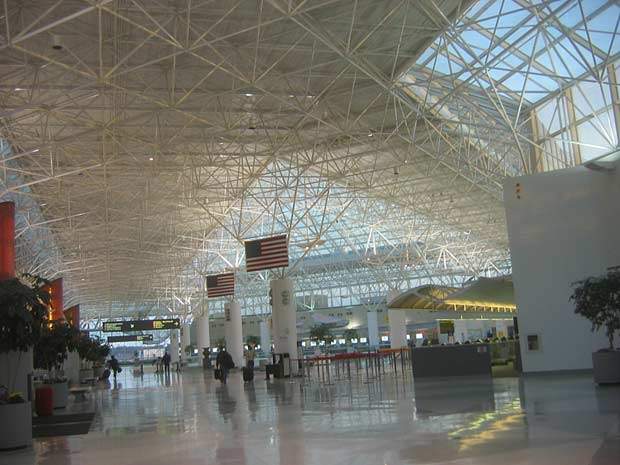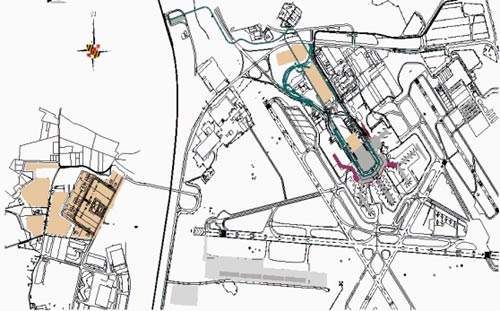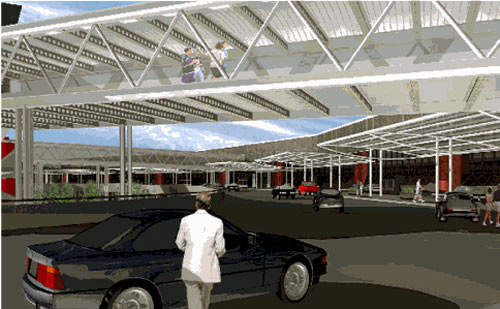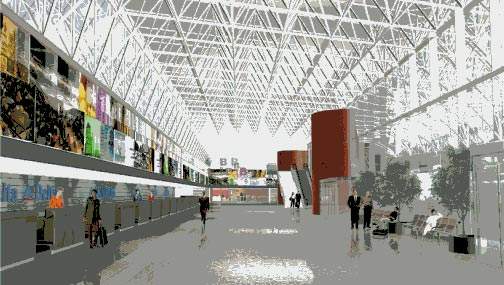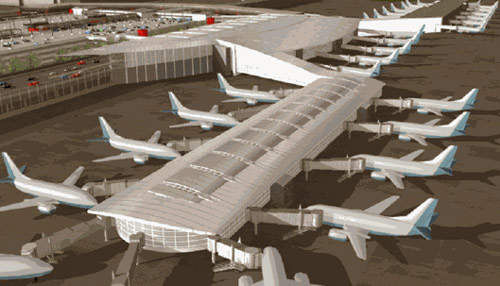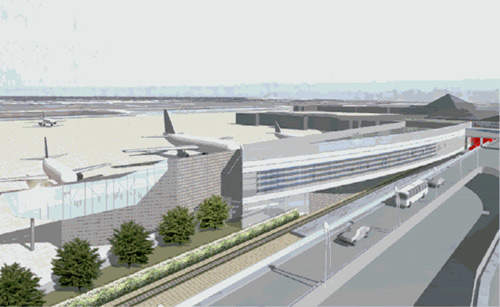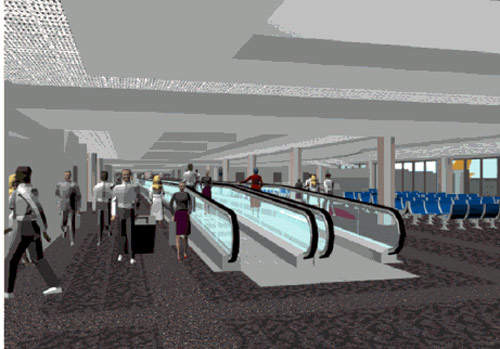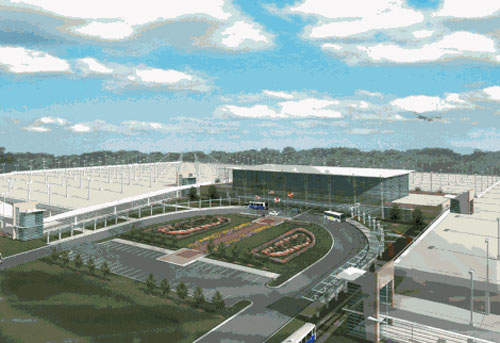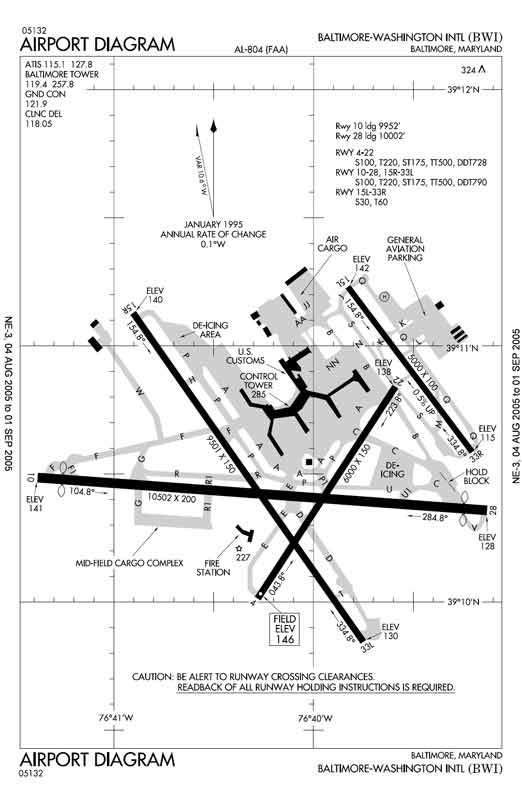Baltimore-Washington International (BWI) Thurgood Marshall Airport is one of the fastest growing, large airports in the US. It was ranked as one of the ‘top 10 easiest US airports to get to’, thanks to its light rail station, which directly connects to the main terminal.
Construction of the light rail station was carefully organised so that airport operations were not disrupted, and necessary activities such as road closures were scheduled for night, the airport’s down-time period.
Past improvements at the airport include the access roadway and bridge, a skywalk, the vertical core circulation system, concourses, car parking and roadways. The total cost of all the airport’s improvements is estimated at $1,800m.
The expansion of Baltimore-Washington International Airport is necessary because its air traffic has increased dramatically. In 2005, the airport handled 19.74 million passengers (only slightly up from 2000 figures at 19.6 million, which showed the recovery following the 2003 terrorist attacks), and rose to 21.9 million in 2010.
A second reason for development is the airport’s economic impact. Airport authorities have put its possible revenue into billions. BWI airport services Maryland and Washington DC and the surrounding area.
Schedule of works at Baltimore-Washington
In 2004, the concourse B skywalk with new elevators / escalators and a new car park with 8,400 spaces opened.
Concourse A opened in Q2 2005 with new gates, a skywalk, a food court and elevators/escalators. The concourse A/B connection was completed and opened in Q3 2005.
In mid-2006, the terminal-widening work was completed with upgrades to the ticketing concourse and baggage claim areas, as was the upper and lower level roadway widening.
The airport promoted a ‘kind to the environment and health’ scheme with a 12.5-mile scenic trail, which can be tackled on foot or on a bike that loops around the airport. The trail includes the Thomas A Dixon Jr aircraft observation area, where hikers can view planes landing and taking off.
In 2009, the airport started the C-D apron reconstruction project to rebuild pavements and taxi lines at concourses C and D. The FAA provided $15m for the project.
In 2010, the airport installed an advanced new line baggage screening system, and a $100m expansion, including new security lanes, and food and retail spaces, will be completed by 2013.
Roadway improvements
Roadway improvements at BWI airport were to be carried out between 2001 and 2003, but were completed in 2006. The aim was to reduce congestion around the airport and make better use of the available space.
The total cost will reach $172m and the aim is to reduce congestion around the airport and make better use of the space available. This has meant a series of new commercial vehicle lanes, with added exits on the lower level, skywalks and moving walkways, and a new terminal wall, which creates an internal circulation space in the baggage claiming hall.
The project to widen and extend the roads in front of the main terminal will cost $200m, and includes the erection of pedestrian bridges with moving sidewalks.
Concourses A and B
BWI airport’s passenger terminal is spread over 45.4 acres. It has five concourses, four for domestic and one for international passengers. In concourse A, a 20-gate concourse has replaced the old three-gate concourse. The existing concourse B was reconstructed and modified to connect with the Concourse B extension.Moving walkways were also installed in both concourses to aid passenger circulation around the new larger complex.
Construction of the concourses began in 2001; concourse A was completed and opened in 2005, and concourse B during 2004. The total cost of work was $174m.
P Flanigan and Sons of Baltimore was responsible for the $45.8m main construction contract for concourse A, along with URS Corporation. The construction of the new concourses required an analysis of the original buildings because, although the owners did not want to replicate the space frame of the original buildings, they wanted the designers to make it look like the same for continuity and aesthetic reasons.
The solution was a steel frame with lots of skylights to create light, and a French fabric roof tent frame ceiling. The resulting structure gives the building a translucent environment.
Concourse F
For concourse F, the building plans envisaged the addition of four gates as well as ancillary works. Design work started in 2000 and was completed by Q3 2001. The cost of construction was estimated at $4m.
Moving walkways and escalators
Schindler Elevator Corporation of Beltsville was awarded a $10.4m contract to install 31 new escalators and 41 moving walkways for easier passenger access around the terminal complex.
Parking improvements
The parking project involved a series of improvements to be carried out between February 2001 and November 2003. The new Elm Road Parking Garage was equipped with smart technology to implement a pay and display system. The garage features the high-tech BWI Smart Park system.
Baltimore-Washington International is one of two US airports that have installed an electronic guidance system called Signal-Park (the other is in Jacksonville, Florida). BWI wired 4,900 spaces by 2001, and another 8,000 in 2004. By Summer 2006 passengers were able to reserve spaces in advance. The cost of the project was about $328m.
By 2011, parking spaces were increased to 25,000, and an electric vehicle charging system was installed.
Another recent improvement to the airport parking system is the free ‘cellphone lot’. Here, people picking up passengers can park until they are called by the passenger instead of circling the airport and causing congestion.
Car rental at Baltimore-Washington airport
The new $134.8m Consolidated Rental Car Facility, with space for ten car rental companies, opened in December 2003. Located on a 100 acre site west of the airport, it provided significant space on the lower level of the BWI terminal building for other customer service needs.
Moving the rental car operations to its own facility also freed up more than 1,000 prime parking spaces in the garage.
Ownership
Baltimore-Washington International Airport is owned by the State of Maryland. It is administered through the Maryland Aviation Administration. This has some effect on the airport’s procurement, as it generally seeks to source goods and services from Maryland companies. It also means that the airport seeks to help ethnic minority owned businesses.

